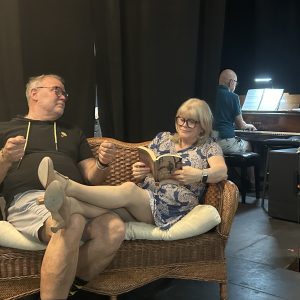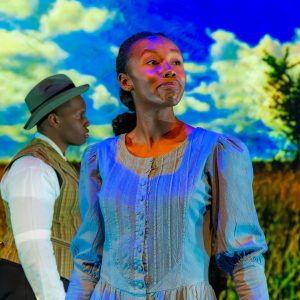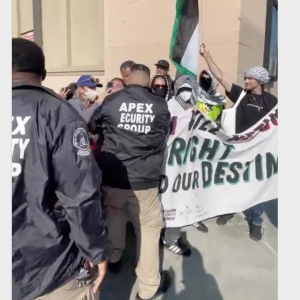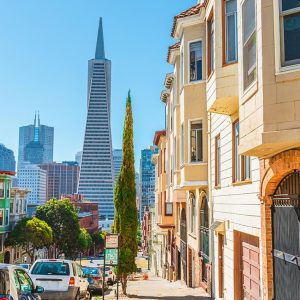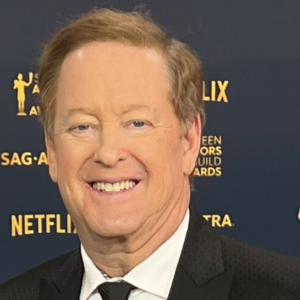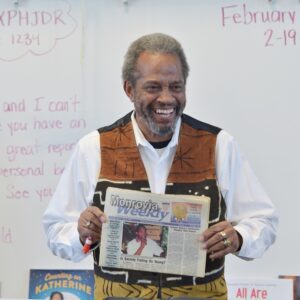 View Winners →
View Winners → As the Country Confronts Racism, Monrovia Ponders its Past
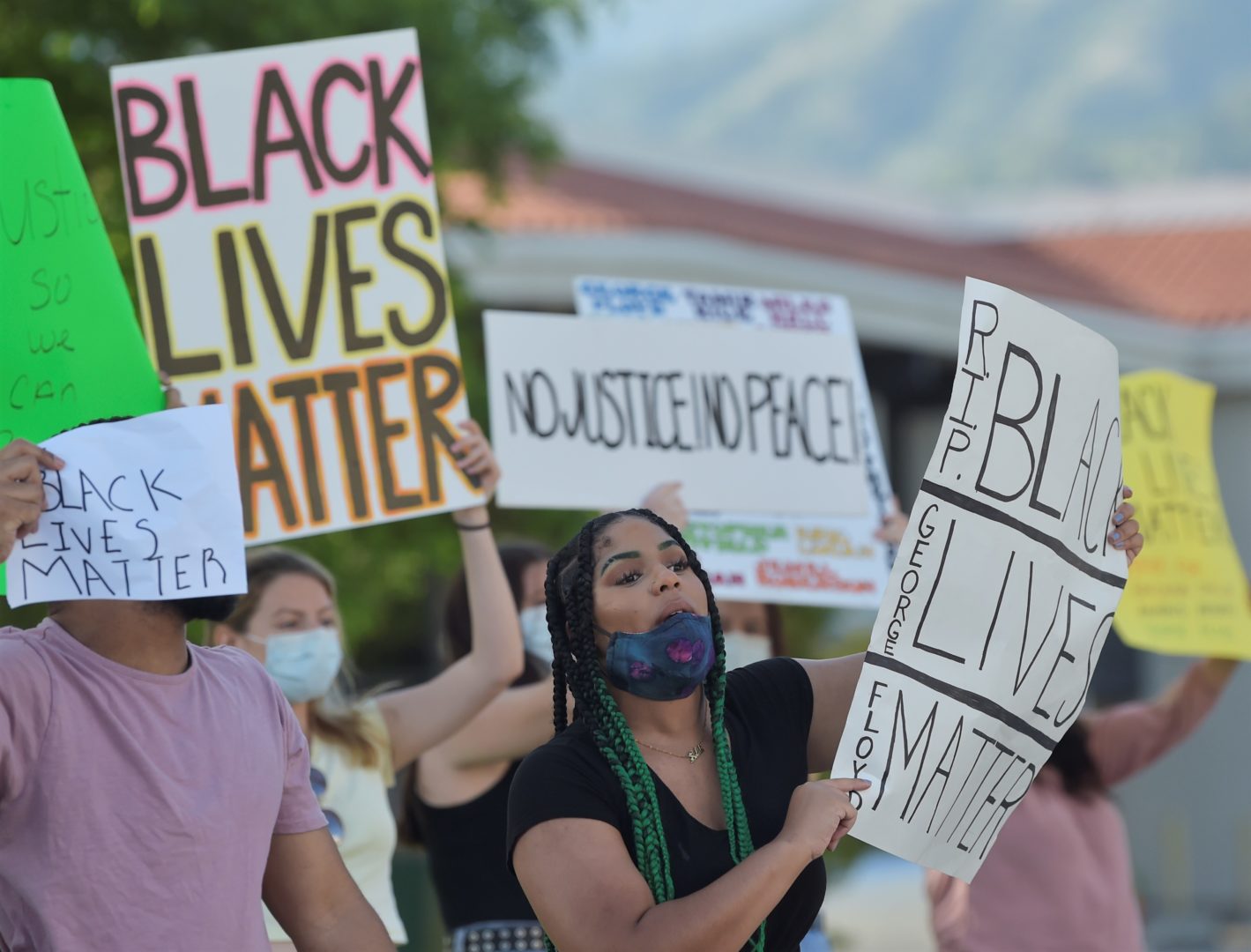
Editor’s Note: Some community members contacted this newspaper to point out an omission of three African Americans who either serve or have served on the School Board: We’d like to acknowledge:
Former Board Member: Monina Diaz (2000-2004)
Former Board Member: Terrance Williams
Current Board Member: Selene Lockerbie
Apologies for the oversight.
If nothingelse, 2020 will be known for tremendous division in the United States andaround the world, due in no small part to protesters of inequality and racism,not to mention the staggering effects of COVID-19 on the planet.
America is inmid-crisis mode right now and November’s election is, perhaps, more contentiousthan at any time in the history of the United States. Protests, policeshootings and political imprudence have dominated news cycle for what seemslike an eternity.
Fifty-sevenyears after the famous Martin Luther King Jr. speech in D.C., there was anotherhistoric March on Washington last week: This year, the march for justice andequality was in the wake of George Floyd’s murder at the hands of policeofficers in Minneapolis, Minn.
That shockingand pivotal event, caught on video, ignited a conflagration of reactions allover the world indicating that America has an extremely long way to march toreach Martin Luther King Jr’s dream of equality for all.
Reminiscentof the protests of the 1960s, hundreds of thousands around the world have hadenough of injustice. Many cities in the U.S. have grown tense and uneasy and,in some cases, — like Portland, Ore. and Kenosha, Wis. — have turned deadly resultingin even more pressure on citizens and municipalities.
The police, NationalGuard, federal agents and now an increasing number of vigilantes have thunderedinto the spotlight, vividly illustrating our intensifying divisiveness, exclusivity,and distaste for those with whom we do not agree.
In the post-2020Democratic and Republican convention era, it’s clear the country is divided andhistory is indeed repeating itself — leaving some asking if there is any hopethat we might ever get along, to paraphrase the Rodney King quote following the1992 Los Angeles Riots.
Locally, aschool board election coming up in Monrovia has KGEM host Ralph Walker andother community members asking some important questions about exclusion andracism. Walker points out the urgent need for recognition of those who pavedthe way to an integrated city such as Monrovia.
Walker saidthat he was “astonished” to hear that a few in the community, includingpotential school board candidates, were unacquainted with the name of an inspirationalBlack woman who changed the course of Black history in Monrovia schools, MimiMency.
“I couldn’tbelieve it, how could someone interested in Monrovia education not know suchimportant local history?” Walker asked Monrovia Weekly Monday.
To many, thelocal school board election(s) are a just one big, long yawn. However, historyteaches us quite the opposite, hence Walker’s comments.
Sept. 10,1970 saw the first Black students arrive by bus to attend Plymouth Elementary School in Monrovia duringthe first day of integration. Integration at the Monrovia Unified School Districtbegan during the 1970-71 school year.
Among thosefronting those challenges was a truly extraordinary individual who deservesrecognition, above and beyond the hallowed hallways of Monrovia schools.
In 1972, MimiMency became the first African American elected to office in Monrovia when shejoined the school board. Other Black residents followed Mency into electedoffice, like Robert (Bob) Bartlett, who was the first African American to beelected to the Monrovia City Council in 1974. He served as mayor between1976-78 and 1988-2001. Then came Clarence Shaw (2009-2013) and Larry Spicer(2013- present), both serving on City Council.
Things werestarting to evolve, and times really were changing, especially for the Blackcommunity and the unity and desegregation of Monrovia.
“Mimi lovedthis community and led through respect and love,” former Monrovia Mayor Mary AnnLutz said in an interview with late local newspaper reporter Janette Williams,upon Mency’s death. “When Mimi spoke, you listened,” Lutz quipped.
“It was ahuge lift to the community, including people who were not African American, tohave someone of African American heritage on the board of education,” Bartletttold a local reporter in 2011 upon Mency’s death.
Mency helpedguide school integration and made sure all resources were given equally at allschools in the city.
Mency servedon the school board, twice as president, from 1972 to 1984. She was appointedto the Monrovia Planning Commission in 1985 and was subsequently honored by theMonrovia-Duarte Black Alumni Association.
“Mimi caredabout every single person in Monrovia, especially the children,” said hergranddaughter in a tribute published in a local paper in 2011. “If it wasn’tfor her, I honestly believe the [Monrovia] schools wouldn’t be structured theway they are now. And she was a sweetheart, too.”
Beacon Mediacontributor and PCC professor Susie Ling said that “March 1969 saw more racialfighting at Monrovia High. The students of the Afro-American Associationcontinued to be frustrated at the lack of social opportunity. Chaos wasencouraged by the presence of the white supremacist organization on campus.”
Monrovianative John Parker said, “One day, fighting just broke out at lunch. It wastense until 1971. There were certain unwritten rules: Blacks could not bequarterbacks; Blacks could not go north of Foothill Boulevard without beingharassed. The Blacks and whites would hang out at different sections of theschool.”
Councilman LarrySpicer added, “There were no Black teachers, no Black bus drivers, no AfricanAmerican history in the curriculum. The issues that were going on all over thecountry were finally coming to Monrovia.”
In 1969massive race riots closed Monrovia High School. In the early 1970s, students,parents and district officials forged new directions. Black faculty was hired,including those who taught African American studies. Rodney Hooks was seniorclass president and Roy Elder was the ASB president in 1968; Joannie Gholar(Yuille) was the first Black female ASB president in 1971-72, according toLing’s vast knowledge of Monrovia’s history.
By 1969, aBlack Student Union (BSU) was established at Monrovia High. In 1971-72, thestudents found an effective conduit for change: the BSU Choir.
“The 1992L.A. Riots and the more recent incarceration rates of young Black men remind usthat racism remains real,” says Ling.
The ethnicdynamics of the San Gabriel Valley have shifted as the populations of Latinoand Asian Americans increase. Globalization has significant consequences onlocal jobs and fiscal stability. But Monrovia knows that their history ofworking together for their community is their strength and heritage.



















